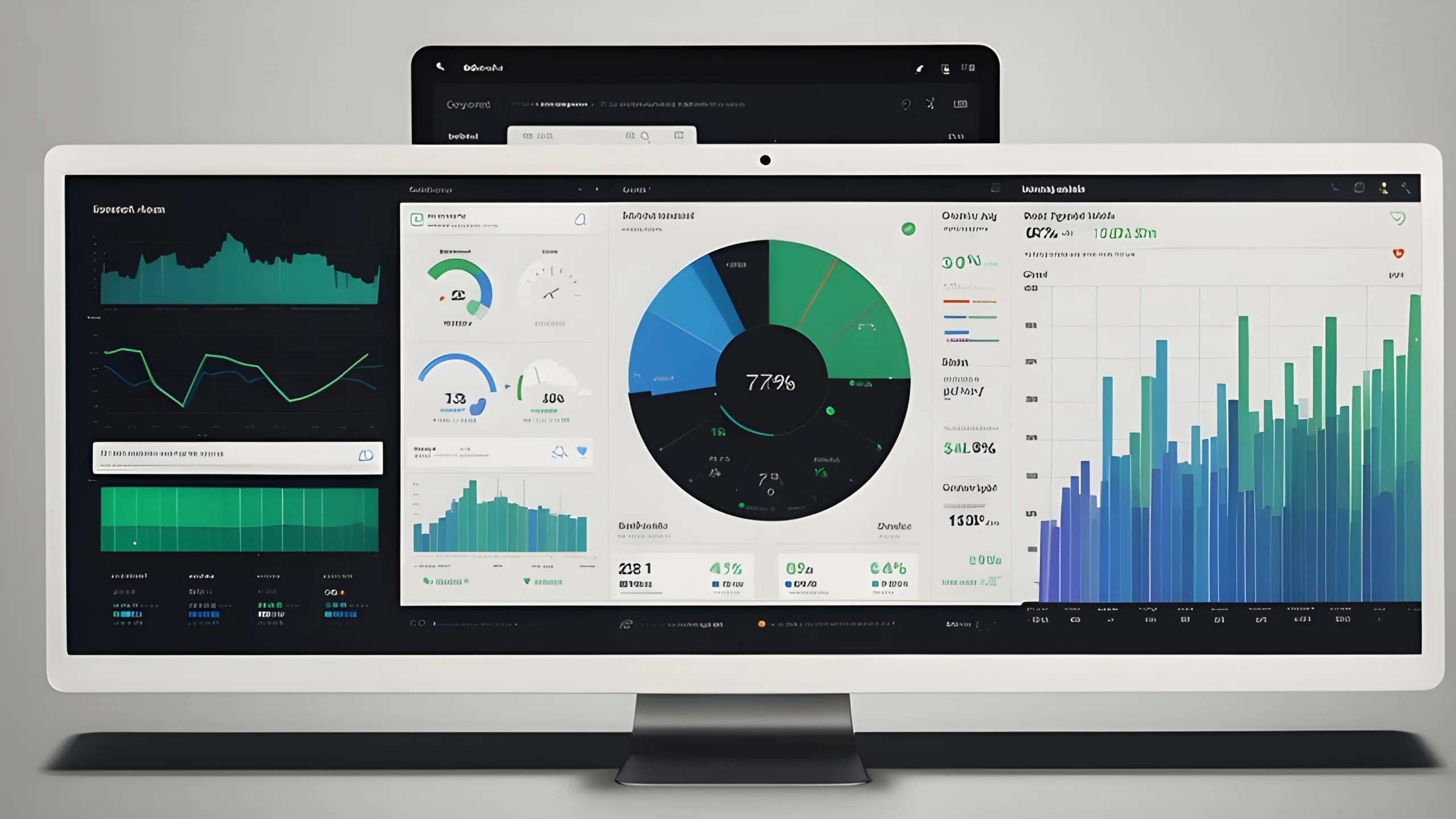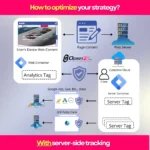Understanding How Long Does SEO Take to Rank in Today’s Digital Landscape
If you’re investing in SEO, you’re probably wondering about the timeline for seeing real results. It’s one of the most common questions I get from business owners, and honestly, it’s a smart question to ask. After all, you’re putting time, money, and effort into your digital presence, so you deserve to know when you’ll start seeing returns on that investment.
Here’s the truth: SEO isn’t like flipping a switch. Unlike search engine marketing (SEM) where you can launch a campaign and see traffic within hours, SEO is more like planting a garden. You need to prepare the soil, plant the seeds, water them regularly, and then wait for nature to do its thing. But when those plants finally bloom? That’s when you realize the wait was worth it.
The good news is that with the right approach and realistic expectations, you can start seeing meaningful improvements in your search rankings within a few months. Let me walk you through exactly what to expect and how to make the most of your SEO journey.
How Long Does SEO Take to Rank? Breaking Down Realistic Timelines
When clients ask me about SEO timelines, I always start by explaining that different strategies yield results at different speeds. Think of it like transportation options – some are faster but more expensive, while others take longer but provide lasting value. Here’s what you can realistically expect from various SEO approaches:
- Technical SEO improvements: 1 to 3 months for initial results
- Local SEO optimization: 2 to 6 months for local visibility
- Content-based SEO: 3 to 6 months for blog and article rankings
- Link building campaigns: 4 to 12 months for authority building
- Social media SEO integration: 3 to 9 months for social signals impact
These timelines aren’t set in stone, though. Your specific situation matters enormously. If you’re in a highly competitive industry or targeting broad keywords, add a few months to these estimates. On the flip side, if you’re focusing on niche, long-tail keywords with less competition, you might see results faster than expected.
The Real Reasons Why SEO Rankings Take Time to Develop
Understanding why SEO takes time can help you stay patient and focused on the long game. Let me break down the main factors that influence your SEO timeline.
Google’s Crawling and Indexing Process
First things first – Google needs to actually find your content before it can rank it. When you publish a new page or make significant updates, Google’s crawlers need to discover these changes, process them, and update their massive index. This discovery phase alone can take anywhere from a few days to several weeks, depending on your site’s crawl frequency and authority.
Moreover, even after Google indexes your content, it doesn’t immediately know where to rank it. The search engine needs time to understand your content’s quality, relevance, and how users interact with it. This evaluation period is crucial for determining your ultimate ranking position.
The Competitive Nature of Search Rankings
Here’s something many people don’t realize: you’re not just trying to rank – you’re trying to outrank established competitors who’ve been building their online presence for years. These sites have accumulated backlinks, established topical authority, and proven their value to Google over time. Breaking into those top positions requires not just matching their efforts, but exceeding them in meaningful ways.
Think about it like opening a new restaurant in a neighborhood with established favorites. You can’t just show up and expect to be the busiest spot immediately. You need to prove your value, build a reputation, and give people reasons to choose you over the places they already trust.
Building Authority Through Quality Backlinks
Backlinks remain one of Google’s most important ranking factors, but earning quality links takes time and effort. You can’t simply buy a bunch of links and expect to rank (in fact, that’ll likely hurt you). Instead, you need to create link-worthy content, build relationships with other websites in your industry, and earn those links naturally.
This process involves outreach, content creation, relationship building, and often multiple follow-ups. A single high-quality backlink from a reputable site might take weeks or months to secure, but it’s worth far more than dozens of low-quality links.
Content Maturation and User Signals
Even the best content rarely ranks immediately for competitive keywords. Google wants to see how users interact with your content over time. Are people clicking through to your site? Are they staying to read your content or bouncing back to search results? Are they engaging with your site in meaningful ways?
These user signals take time to accumulate, and Google uses them to refine its understanding of your content’s value. That’s why you’ll often see gradual ranking improvements over several months rather than sudden jumps to the top.
Proven Strategies to Accelerate Your SEO Ranking Timeline
While you can’t rush Google’s algorithm, you can certainly optimize your approach to see results as quickly as possible. Here are the strategies I’ve seen work consistently for accelerating SEO success.
Technical SEO: Your Foundation for Faster Rankings
Technical SEO improvements often show the fastest results because they remove barriers that prevent Google from properly understanding and ranking your content. Focus on these high-impact technical optimizations:
- Page speed optimization: Aim for load times under 3 seconds on both desktop and mobile
- Mobile responsiveness: Ensure your site works flawlessly on all devices
- XML sitemap creation: Help Google discover all your important pages quickly
- Schema markup implementation: Give Google clear context about your content
- Crawl error fixes: Remove any technical issues blocking Google’s access
For a deeper dive into technical SEO fundamentals, check out our guide on technical SEO for better search rankings. These improvements can often show results within 1-3 months because they directly impact how Google crawls and understands your site.
Smart Keyword Targeting for Quicker Wins
One of the biggest mistakes I see businesses make is immediately targeting the most competitive keywords in their industry. That’s like a new boxer challenging the heavyweight champion on day one. Instead, start with strategic keyword targeting that balances search volume with realistic competition levels.
Focus on long-tail keywords that indicate high purchase intent. For example, instead of targeting “shoes,” target “comfortable walking shoes for plantar fasciitis.” These specific queries often have less competition and attract users who are closer to making a purchase decision. Our keyword research guide explains this strategy in detail.
Content Creation That Google Can’t Ignore
Creating content that ranks quickly requires understanding what Google values most: comprehensive, user-focused content that thoroughly answers search queries. But here’s the key – you need to go beyond just answering questions. You need to provide the best possible resource on your topic.
This means creating content that’s not only informative but also well-structured, easy to navigate, and enhanced with relevant visuals, data, and examples. Consider incorporating these elements to accelerate your content’s ranking potential:
- Original research or data: Google loves fresh insights that can’t be found elsewhere
- Expert quotes and interviews: Add authority and unique perspectives
- Comprehensive coverage: Address related questions users might have
- Clear structure with descriptive headings: Make content easy to scan and understand
- Multimedia elements: Include relevant images, videos, or infographics
Learn more about creating effective SEO content in our SEO content guide for small businesses.
Local SEO: The Fast Track for Location-Based Businesses
If you’re a local business, I’ve got great news – local SEO typically shows results faster than traditional SEO. Why? Because you’re competing in a smaller pond. Instead of trying to rank nationally or globally, you’re focusing on your specific geographic area.
Local SEO success starts with claiming and optimizing your Google Business Profile. This free tool can get you visible in local search results and Google Maps within weeks if done correctly. Make sure to:
- Complete every section of your profile with accurate, detailed information
- Add high-quality photos of your business, products, and team
- Encourage satisfied customers to leave reviews
- Post regular updates about your business
- Respond promptly to questions and reviews
Beyond Google Business Profile, focus on building local citations (mentions of your business name, address, and phone number) on reputable local directories. Consistency is crucial here – make sure your business information is identical across all platforms. For a complete local SEO strategy, check out our local SEO guide for New Jersey businesses.
How Domain Age and Authority Impact SEO Ranking Timelines
Here’s a reality check that might be tough to swallow: if your website is brand new, it’s going to take longer to rank than an established site making the same SEO efforts. This isn’t Google playing favorites – it’s about trust and proven value.
Established domains have several advantages that impact ranking timelines. They’ve had years to accumulate backlinks naturally, build topical authority through consistent content creation, and demonstrate to Google that they’re legitimate, trustworthy sources of information. They also typically have more indexed pages and a broader keyword footprint.
But don’t let this discourage you if you’re starting fresh. Every successful website started from zero. The key is understanding that you’ll need to be more patient and perhaps more aggressive with your SEO efforts initially. Focus on building a strong foundation with quality content and earning those first crucial backlinks from reputable sources in your industry.
Essential Metrics to Track Your SEO Progress
While you’re waiting for those top rankings, it’s crucial to track the right metrics to ensure your SEO efforts are moving in the right direction. Too many businesses focus solely on rankings and miss other important indicators of SEO success.
Start by monitoring your organic traffic growth. Even if you’re not ranking #1 yet, increasing organic traffic indicates that your SEO is working. Use Google Analytics to track not just overall traffic, but traffic to specific pages you’re optimizing. Look for steady growth over time rather than expecting dramatic spikes.
Beyond traffic, pay attention to these key performance indicators:
- Keyword ranking improvements: Track your target keywords weekly or bi-weekly
- Click-through rates: Monitor how often people click your results in search
- Engagement metrics: Check bounce rate, time on site, and pages per session
- Backlink growth: Track both quantity and quality of new links
- Conversion rates: Measure how organic traffic converts compared to other channels
Understanding these metrics helps you make data-driven decisions about your SEO strategy. For example, if you’re getting traffic but high bounce rates, you might need to improve your content quality or page load speed. Learn more about maximizing your organic traffic value with our conversion rate optimization services.
Maximizing ROI While Waiting for SEO Rankings
I get it – waiting months for SEO results can feel frustrating, especially when you need customers now. That’s why smart businesses don’t rely on SEO alone. Instead, they create an integrated digital marketing strategy that delivers results at different timelines.
While your SEO efforts are building momentum, consider complementing them with faster-acting strategies. SEM services can drive immediate traffic to your optimized pages, helping you test which keywords and content convert best. This data becomes invaluable for refining your SEO strategy.
Social media marketing offers another avenue for quick wins. By promoting your SEO-optimized content on social platforms, you can drive immediate traffic, earn social signals that may indirectly benefit SEO, and build brand awareness that supports all your marketing efforts. Email marketing to your existing database can also drive traffic to new content, helping it gain traction faster.
The beauty of this integrated approach is that each channel supports the others. Your paid advertising helps you identify high-converting keywords for SEO. Your SEO content provides valuable resources for social media and email campaigns. Everything works together to build your online presence more effectively than any single strategy alone.
The Critical Role of Web Design in SEO Success Timelines
Something that often gets overlooked in SEO discussions is how your website’s design impacts ranking timelines. A poorly designed website can sabotage even the best SEO efforts, while a well-designed site can accelerate your results significantly.
User experience signals play an increasingly important role in Google’s ranking algorithm. If visitors land on your site and immediately leave because it’s confusing, slow, or unappealing, Google notices. These negative signals can prevent your content from ranking well, regardless of how optimized it is.
Focus on creating a website that prioritizes user needs. This means intuitive navigation that helps visitors find information quickly, fast load times that don’t test patience, mobile responsiveness that works flawlessly on all devices, and clear calls-to-action that guide users toward conversion. Our web design and development services incorporate SEO best practices from the ground up.
Common Pitfalls That Delay SEO Ranking Success
Over the years, I’ve seen businesses make the same mistakes that unnecessarily extend their SEO timelines. Learning from these common pitfalls can help you avoid delays and see results faster.
One major mistake is inconsistent effort. SEO isn’t something you can do intensively for a month and then ignore. Google rewards consistency, so publishing one piece of content every week for a year is better than publishing 20 pieces in one month and then nothing for months.
Another common issue is neglecting existing content. Many businesses focus solely on creating new content while ignoring opportunities to improve what they already have. Updating and optimizing existing pages can often yield faster results than creating entirely new content, especially if those pages already have some authority and backlinks.
Perhaps the biggest mistake is trying to game the system with black-hat tactics. Buying links, keyword stuffing, or using other manipulative techniques might seem like shortcuts, but they inevitably backfire. Google’s algorithms are sophisticated enough to detect these tactics, and the penalties can set your SEO efforts back by months or even years.
Planning Your SEO Strategy for Long-Term Ranking Success
Success in SEO requires thinking beyond just “how long does SEO take to rank” and developing a sustainable, long-term strategy. The businesses I see achieve the best results are those that view SEO as an ongoing investment in their digital presence rather than a one-time project.
Start by setting realistic expectations and timelines based on your specific situation. If you’re in a highly competitive industry with a new website, plan for 6-12 months before seeing significant results. If you’re in a less competitive niche with an established domain, you might see improvements in 3-6 months. Either way, commit to the process for at least a year to give your efforts time to compound.
Develop a content calendar that ensures consistent publishing and regular updates to existing content. Plan your link-building efforts strategically, focusing on building relationships that can yield multiple linking opportunities over time. Most importantly, stay informed about SEO best practices and algorithm updates, as the search landscape continues to evolve. Our guide on SEO strategy for 2025 provides a comprehensive roadmap for long-term success.
Frequently Asked Questions
Why does my competitor rank higher even though my content is better?
Content quality is just one ranking factor among many. Your competitor might have stronger domain authority, more backlinks, better technical SEO, or simply more time in the market. Focus on building your own authority rather than just comparing content quality. Over time, consistently superior content combined with solid SEO fundamentals will help you catch up and potentially surpass competitors.
Should I focus on ranking for one keyword or multiple keywords?
Definitely multiple keywords, but with a strategic approach. Each page should have a primary keyword focus but can rank for dozens or even hundreds of related long-tail variations. This diversified approach not only drives more traffic but also makes your SEO more resilient to ranking fluctuations. Create comprehensive content that naturally incorporates related keywords and variations.
Is it worth doing SEO if I’m in a very competitive industry?
Absolutely, but adjust your strategy accordingly. In competitive industries, focus initially on long-tail keywords and niche topics where you can establish authority. Build your domain strength gradually while investing in other marketing channels for immediate results. Remember, your competitors face the same challenges, and many give up too early. Persistence and smart strategy can help you carve out your space even in competitive markets.
 Written by: Romulo Vargas Betancourt
Written by: Romulo Vargas Betancourt
CEO – OpenFS LLC







